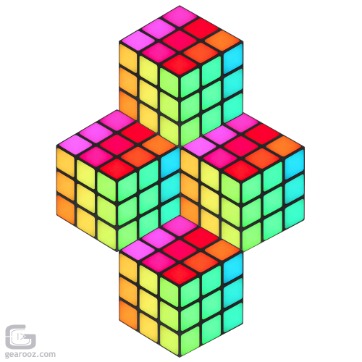Contents

Bullish and bearish crossover https://topforexnews.org/ signal price points where you should enter and exit stocks. Swing trading is a style of trading that attempts to capture short- to medium-term gains in a stock over a period of a few days to several weeks. Swing traders primarily use technical analysis to look for trading opportunities. Investors who prefer this style do so because it requires as little time commitment as possible in the stock market.


But in doing so, they may end up missing out on solid long-term trends in underlying financial assets. For instance, a stock such as Apple has appreciated for a long time and would have been very profitable for a trader that held it all along. But a swing trader would have only booked minimal profits along the way.
https://forex-trend.net/ trading tries to identify entry and exit points into a security on the basis of its intra-week or intra-month oscillations, between cycles of optimism and pessimism. Trade positions are subject to overnight and weekend market risk. Some abrupt reversals in the market can cause a substantial loss because you don’t trade the whole day. Swing trading is designed to take advantage of the price fluctuations of security. Traders look to capture small moves within a larger overall trend. RSI is a momentum oscillator that measures the speed and change of price movements.
Risks in swing trading are commensurate with market speculation in general. Risk of loss in swing trading typically increases in a trading range, or sideways price movement, as compared to a bull market or bear market that is clearly moving in a specific direction. A basic EMA crossover system can be used by focusing on the nine-, 13- and 50-period EMAs. A bullish crossover occurs when the price crosses above these moving averages after being below. This signifies that a reversal may be in the cards and that an uptrend may be beginning. When the nine-period EMA crosses above the 13-period EMA, it signals a long entry.
Secondly, swing traders are also more susceptible to market volatility and can suffer massive losses. They also have the potential to miss out on potential long-term market gains while pursuing a short position. Lastly, fees are often higher since these types of portfolios require more management than others. We’ve summarised five swing trade strategies below that you can use to identify trading opportunities and manage your trades from start to finish. Apply these swing trading techniques to the stocks you’re most interested in to look for possible trade entry points. You can also use tools such as CMC Markets’ pattern recognition scanner to help you identify stocks that are showing potential technical trading signals.
https://en.forexbrokerslist.site/ trading involves opening and closing multiple trades throughout the day, with none remaining open overnight. Day traders strive to take advantage of even the slightest of price fluctuations and market volatility, and in this respect share some similarities with arbitrage traders . Usually, they focus on shorter timeframes to identify optimal entries and exits. The primary goal here is to scoop as many pips as possible from several short-term trades, usually using higher leverage. Unlike day trading, there is no restriction on how much you need to start swing trading. With a $1,000 initial capital, you can comfortably trade stocks that are priced around $20-90.
Real-World Example of Swing Trade in Apple
Swing Trading positions are usually held a few days to a couple of weeks, but can be held longer. Unlike day trading, where trading is extremely fast-paced, swing trading is slower. This strategy is a great way to understand market movements and dip your toe into technical analysis. Swing trading is less risky than other forms of short-term trading. By relying on technical analysis and holding positions for a short period of time, there is lower risk that you get stuck holding an unliquidated position. Swing traders will use tools like moving averages overlaid on daily or weekly candlestick charts, momentum indicators, price range tools, and measures of market sentiment.
Swing trading utilises technical and fundamental analysis to identify market direction as well as optimal price entry and exit points in the market. The swing trading strategy requires patience and calmness because there will be numerous intraday price fluctuations as the trade plays out. It usually involves buying a security and then selling it a few days or weeks later at a higher price. Swing trading demands a lot from financial assets, markets, and traders. This strategy requires both liquidity of financial assets and volatility in the market to take advantage of a price swing.

Becoming a swing trader requires keeping a few important things in mind. Unlike day traders, swing traders generally are only part-time, since trades don’t occur every day. That, paired with this style of trading’s inevitable volatility, means that you will likely take a loss, probably when you first start out. This swing trading strategy requires that you identify a stock that’s displaying a strong trend and is trading within a channel.
Swing traders are also on the lookout for technical patterns like the head-and-shoulders and cup-and-handle. Some of the more common patterns involve moving average crossovers, cup-and-handle patterns, head and shoulders patterns, flags, and triangles. Key reversal candlesticks may be used in addition to other indicators to devise a solid trading plan. The goal of swing trading is to capture a chunk of a potential price move. While some traders seek out volatile stocks with lots of movement, others may prefer more sedate stocks. Cory is an expert on stock, forex and futures price action trading strategies.
Swing Trading Course
She is a library professional, transcriptionist, editor, and fact-checker.

The candlestick chart above illustrates the “cup and handle” consolidation pattern, where the cup is u-shaped and the handle points slightly downward. Our experts choose the best products and services to help make smart decisions with your money (here’s how). In some cases, we receive a commission from our partners; however, our opinions are our own. Investopedia requires writers to use primary sources to support their work.
Assets you can swing trade
This often results in trades that generate huge profits compared to the risks involved while taking them. Swing trading is also a flexible strategy that can be applied in most markets. Because of the relatively large profit targets, swing traders can also trade assets with wider spreads or lower liquidity. Some traders believe that swing trading is very profitable, while others feel that it is only moderately successful.
- Therefore, swing traders should apply an appropriate strategy to each market environment.
- Hence, swing traders rely on technical setups to execute a more fundamental-driven outlook.
- Even in a prolonged bullish or bearish period, the trends are often punctuated by instances of short-term price pullbacks.
- Swing trades are also viable in actively traded commodities and forex markets.
- You enter into a position as soon as price breaks a key level of RESISTANCE.
Alternatively, the price will rise until supply exceeds demand – that will represent the resistance area where the price is expected to turn lower. Day trading is considered to be extremely risky because of the short amount of time that elapses between a purchase and a sale. No content on the website shall be considered as a recommendation or solicitation for the purchase or sale of securities, futures, or other financial products.
By opening a short trade at this point, you could make a tidy profit. How much inflation and capital gains will take out of your investment? SmartAsset’s investing guide can help you sort out some of the initial details.
Though swing trading and day trading are both styles of active trading that seek to benefit from short-term trades, there are several key differences. Earning calendars will help you factor in sudden price movements to your swing trading strategies. Swing traders may use a Fibonacci retracement indicator to identify potential reversals, support, and resistance levels, as well as place stop-loss orders and set target prices. The Fibonacci retracement ratios of 23.6%, 38.2%, and 61.8% are believed to reveal possible reversal levels.
